Understanding Deaf Cats
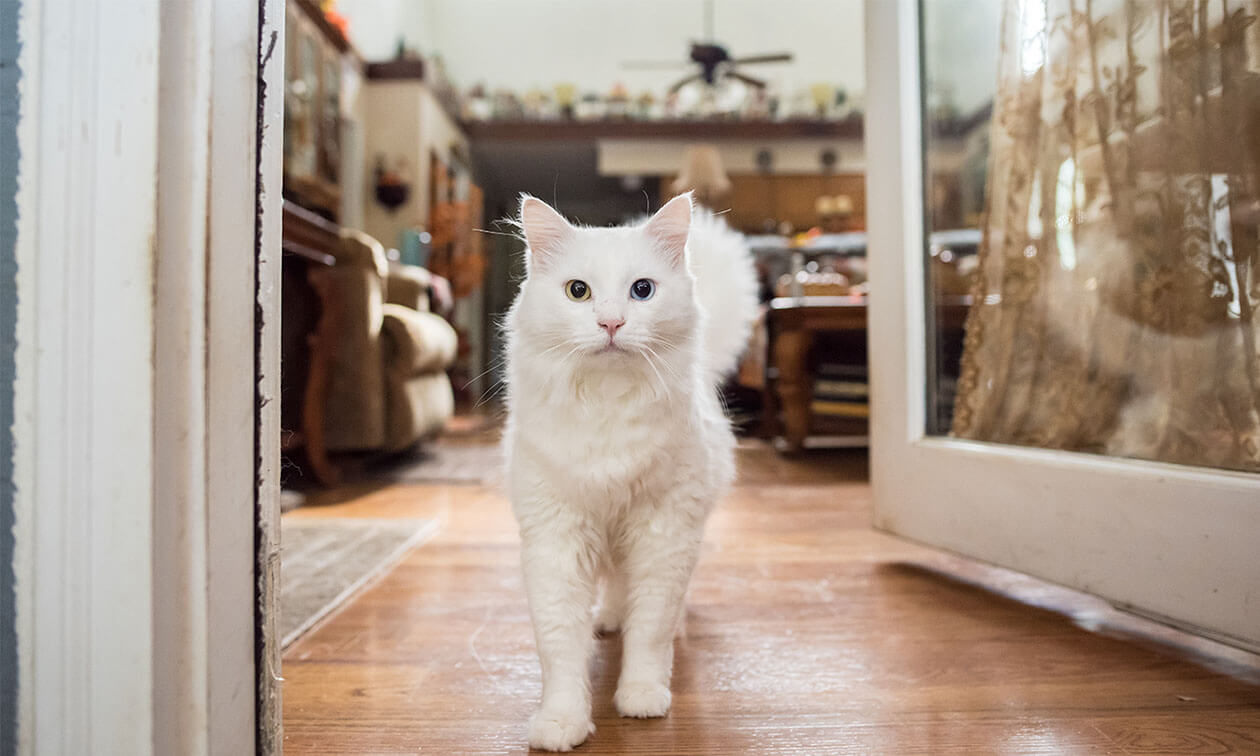
Understanding Deaf Cats:
Deafness is a condition that can affect cats, just like humans and other animals. It is important for cat owners to understand the unique needs and characteristics of deaf cats in order to provide the best care and communication.
Deaf cats are unable to hear sounds or respond to auditory cues. This means that their communication relies heavily on visual and tactile signals. Understanding this, cat owners can learn how to effectively communicate with their deaf feline companions. By utilizing visual cues, hand signals, and gentle touch, owners can create a clear line of communication.
Moreover, understanding the behavior and needs of deaf cats helps in creating a safe and secure environment for them. With patience and understanding, living with a deaf cat can be a rewarding experience for both the cat and its owner.
Causes of deafness in cats

Deafness in cats can be caused by a variety of factors. One common cause is congenital deafness, which means the cat is born deaf. This type of deafness is often linked to specific breeds, such as white cats with blue eyes. Some cats may also experience acquired deafness, which can occur later in life due to factors like injury, infections, or exposure to loud noises. Additionally, certain medications and medical conditions can result in hearing loss in cats. It's important for pet owners to be aware of these potential causes and discuss any concerns with a veterinarian. Understanding the underlying cause of a cat's deafness can help inform communication strategies and ensure the best possible care for these unique feline companions.
I Characteristics and behavior of deaf cats

Deaf cats, just like their hearing counterparts, have unique personalities and behavior traits. While each cat is an individual, there are some common characteristics that many deaf cats share.
One notable behavior of deaf cats is their heightened use of other senses such as sight and touch. Since they cannot rely on hearing, they become more visually observant and may use vibrations to navigate their surroundings.
Deaf cats are also known to have a stronger bond with their human companions. They often seek physical contact and enjoy being close to their owners. Additionally, they may be more sensitive to changes in routine or unfamiliar noises since they cannot hear them.
It's important to understand these behaviors and adapt communication strategies accordingly to ensure a harmonious relationship with your deaf feline friend.
Creating a Deaf-Friendly Environment

When living with a deaf cat, it is crucial to design an environment that accommodates their unique needs. Creating a deaf-friendly environment not only ensures their safety but also enhances their overall well-being.
First and foremost, it is important to remove any potential hazards that could pose a danger to a deaf cat. This includes securing windows and doors to prevent escapes and making sure all electrical cords are tucked away safely.
Additionally, providing visual cues throughout the living space can greatly assist in communication. For example, using different colored rugs or mats in specific areas can signify designated spaces for play, food, or rest. Placing signs or labels on important items such as the litter box, food bowls, or scratching posts can also help a deaf cat navigate their surroundings more easily.
Lastly, incorporating enriching activities and toys that stimulate their other senses can greatly enhance their quality of life. Toys with interesting textures, scents, or ones that produce vibrations can provide entertainment and engagement for a deaf cat.
By taking these steps to create a deaf-friendly environment, you are setting the stage for clear communication and ensuring the safety and happiness of your feline companion.
I. Ensuring safety for a deaf cat

Ensuring the safety of a deaf cat is of utmost importance. Since they cannot hear potential dangers, extra precautions must be taken to create a secure environment for them. Start by removing any hazards that could pose a threat, such as sharp objects or toxic plants. Keep windows and doors securely closed to prevent escapes. It is recommended to microchip your cat and ensure they wear a collar with identification tags at all times. Additionally, consider installing baby gates or barriers to restrict access to certain areas where they might get injured. Providing elevated perches or cat trees can give them a safe space away from potential dangers on the ground. By taking these steps, you can help protect your deaf feline companion and provide them with a secure and worry-free living space.
Designing an accessible living space

Designing an accessible living space for a deaf cat is crucial to ensure their comfort and safety. One important aspect of this is removing potential obstacles or hazards that can pose a threat to their well-being. Deaf cats rely heavily on their vision, so it's essential to arrange furniture and objects in a way that allows them to navigate easily. Clear pathways without clutter and ensuring there are no sharp edges or precarious objects are simple yet effective ways to create a safe environment. Providing elevated surfaces, such as shelves or cat trees, can also give them a vantage point and enable them to observe their surroundings. Additionally, incorporating visual cues like colorful toys or contrasting-colored bedding can help them locate specific areas within the living space easily. By considering the unique needs of a deaf cat when designing their living space, you can ensure that they feel secure and comfortable in their home.
Visual Communication Techniques

Visual communication techniques are essential when it comes to communicating with a deaf cat. Since they can't rely on verbal cues, utilizing visual cues becomes crucial for effective communication. One technique is using hand signals to convey commands or requests. By assigning specific hand gestures for different actions, you can create a consistent and easily understandable language with your cat.
Incorporating visual cues in daily routines is another effective method. For example, you can use visual indicators like flashing lights or specific colored objects to signal meal times or play sessions. This helps your cat understand what's happening and reduces any confusion.
These visual communication techniques provide clarity and understanding between you and your deaf cat, strengthening your bond while ensuring clear and effective communication.
I. Using hand signals to communicate
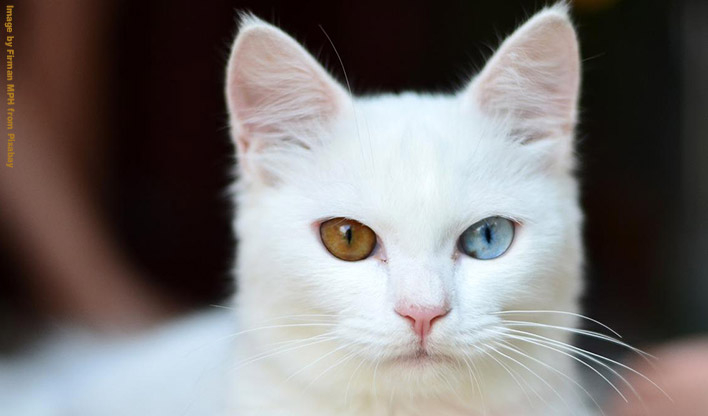
Using hand signals is one effective method for communicating with a deaf cat. Since they cannot hear verbal commands, hand signals provide a visual cue that they can easily understand. When using hand signals, it is essential to keep them consistent and clear. Start by associating specific gestures with basic commands such as "sit," "stay," or "come." Use large, exaggerated movements so that your cat can easily see and interpret the signals. For example, you can raise your open palm to signal "stop" or point towards the ground to indicate "sit." Consistency in using these hand signals will help your deaf cat learn and respond to your commands effectively.
II. Incorporating visual cues in daily routines

Incorporating visual cues in daily routines is essential for effective communication with a deaf cat. Since they cannot hear verbal commands, visual cues provide a non-verbal way to convey messages. When it comes to feeding time, placing food in a consistent location and using a designated food bowl can help your cat understand that it's mealtime. You can also use simple hand gestures or signs to indicate when it's time to play, go outside, or use the litter box.
Additionally, using visual cues during grooming sessions can be helpful. Show your cat the brush before starting and use gestures to let them know what you're about to do. By consistently incorporating these visual cues into their daily routines, you can create a predictable environment that your deaf cat can understand and navigate with ease.
Tactile Communication Strategies

Tactile communication strategies are essential for effectively communicating with a deaf cat. Since they cannot hear verbal commands or cues, using touch and vibrations becomes crucial in conveying messages. Gentle touch can be used to get their attention or signal them to follow a particular direction. For example, lightly tapping their shoulder or gently stroking their back can indicate that it's time for their meal. Additionally, vibrations can also serve as a form of communication. By placing your hand on the ground or an object, you can create vibrations that alert the deaf cat to your presence. Using these tactile techniques consistently and gently will help establish a strong bond and understanding between you and your furry friend.
I. Gentle touch and vibrations as communication tools

Deaf cats rely heavily on their other senses to navigate the world, and gentle touch and vibrations can be valuable communication tools. Since they can't hear verbal cues, a soft touch on their body or a gentle tap on the surface they are sitting on can capture their attention. These tactile sensations act as signals to let them know that their owner wants their attention or is trying to communicate with them.
Additionally, vibrations can also be effective in getting a deaf cat's attention. For example, if you need to call your cat indoors, you can stomp your foot or create small vibrations on the ground. The cat will feel these vibrations through their sensitive paw pads and understand that it's time to come inside.
By utilizing gentle touch and vibrations, owners of deaf cats can establish clear means of communication and strengthen their bond with these unique feline companions.
II. Training a deaf cat to respond to touch

Training a deaf cat to respond to touch is an essential part of communication. Since they cannot hear verbal commands, tactile cues become their primary means of instruction.
To begin training, it is important to use a consistent touch cue for each desired behavior. For example, gently tapping the cat's side can signify 'sit,' while a light stroke along the back can indicate 'come.'
Positive reinforcement is key in teaching a deaf cat to respond to touch. Rewarding them with treats or praise immediately after they execute the desired behavior reinforces the association between touch and reward.
Consistency and patience are vital during this training process. Repetition and practice will help the cat understand the connection between touch cues and specific actions. With time and dedication, a deaf cat can become well-versed in responding to tactile communication.
Communication Aids for Deaf Cats
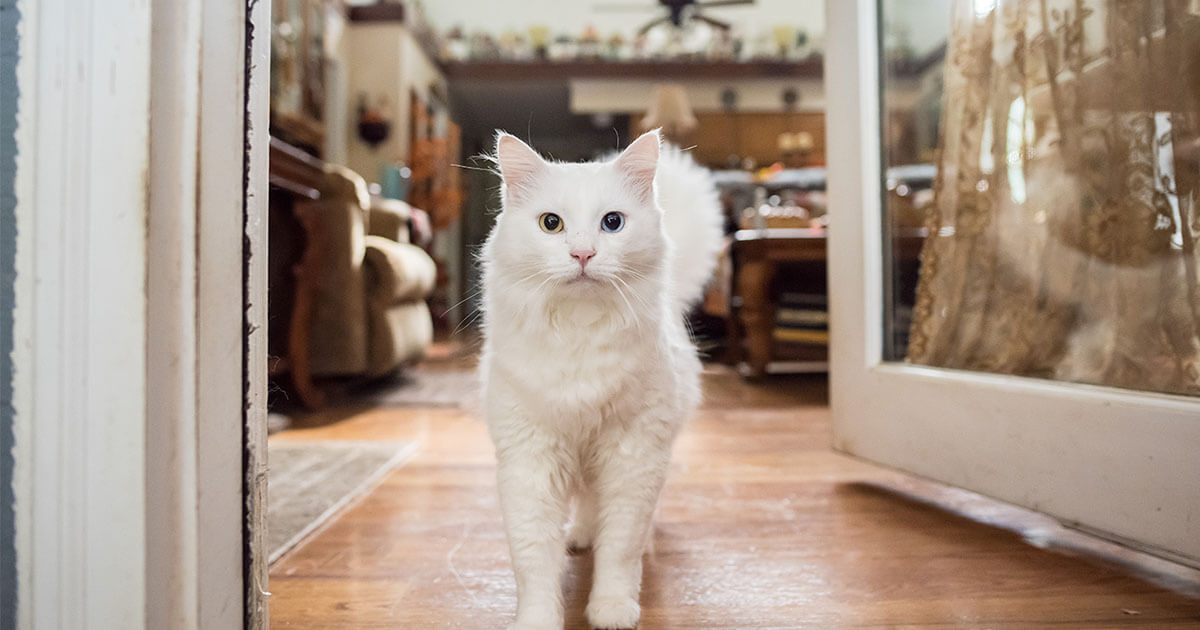
Communication aids can play a crucial role in enhancing communication with deaf cats. One effective aid is the use of vibrating collars or wearable devices specially designed for deaf cats. These devices can be programmed to send gentle vibrations to get the cat's attention or indicate certain commands. Additionally, there are specialized devices equipped with visual or tactile cues that can assist in communication. For instance, there are light-up collars that provide a visual signal to catch the cat's attention, or touch pads that can be trained to simulate specific commands through touch. These aids serve as valuable tools in bridging the communication gap and ensuring effective interaction with deaf feline companions.
I. Using vibrating collars or wearable devices
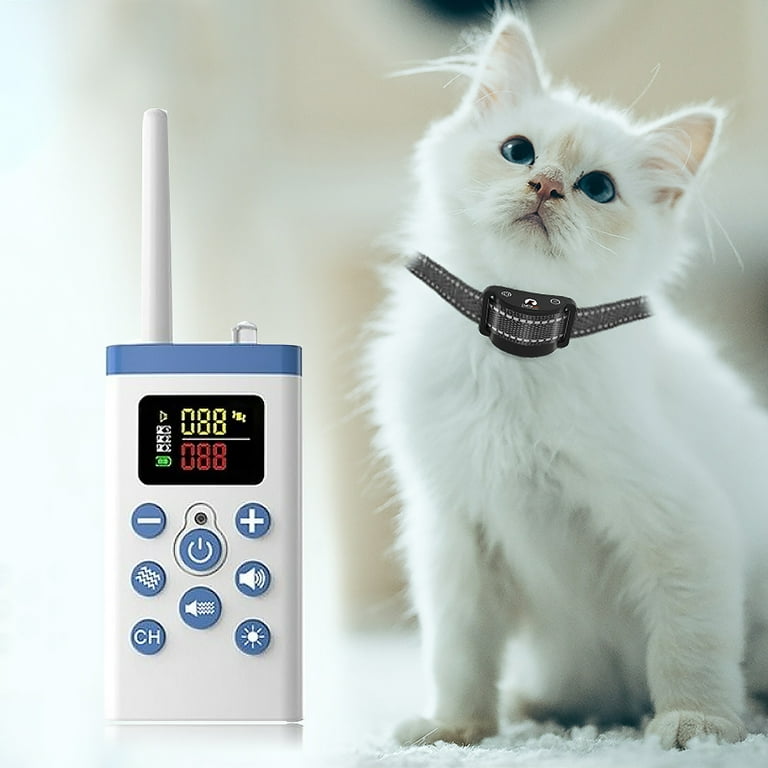
Vibrating collars or wearable devices can be a valuable tool for communication with a deaf cat. These devices work by emitting gentle vibrations that can capture the attention of your feline companion. By associating these vibrations with certain commands or cues, you can effectively communicate with your deaf cat.
When using vibrating collars or wearable devices, it's important to choose ones that are specifically designed for cats. Look for products that are lightweight, waterproof, and have adjustable settings. This ensures comfort and convenience for your furry friend.
To use these devices effectively, start by pairing the vibration with a positive reinforcement or reward. For example, when you press the vibration button on the device, offer a treat or praise to reinforce the desired behavior.
Remember to always consult with a veterinarian or professional trainer before using any communication aids to ensure their safe and appropriate use. By incorporating vibrating collars or wearable devices into your communication routine, you can enhance your bond with your deaf cat and create a clearer means of interaction.
II. Utilizing specialized devices for visual or tactile cues

There are several specialized devices available that can assist with communication between humans and deaf cats. For visual cues, you can use a laser pointer to indicate directions or actions. Cats are often attracted to the bright light and will instinctively follow it. Another option is the use of a visual doorbell, which consists of a button that the cat can press to alert you when they need something.
Tactile cues can be provided through devices such as vibrating collars or wearable devices. These devices emit gentle vibrations that can be felt by the cat, serving as a signal for various meanings. For example, a series of short vibrations could indicate that it's time for the cat to come inside.
Additionally, there are communication apps available that utilize touch screens and specific vibrations to convey messages to your deaf cat. These apps often feature a range of visuals and icons that you can tap on to communicate things like feeding time, playtime, or if they need to go outside.
By utilizing these specialized devices, you can enhance communication with your deaf cat and ensure their needs are met in a clear and effective way.
Establishing a Consistent Routine

Maintaining a consistent routine is crucial when living with a deaf cat. These felines rely heavily on predictability to feel secure and comfortable in their environment. A consistent routine helps them understand what to expect and reduces anxiety or confusion.
When establishing a routine, it is important to ensure regular feeding times, play sessions, and grooming sessions. Set specific times for these activities and stick to them as much as possible. Deaf cats thrive on structure, so maintaining a predictable schedule will help them feel more at ease.
Additionally, incorporating regular communication times into the routine is essential. Allocate specific moments each day to engage in visual and tactile communication techniques with your deaf cat. This consistency allows for better understanding and strengthens your bond with them.
By establishing a consistent routine, you provide your deaf cat with the stability they need to navigate their world confidently and comfortably.
I. Importance of regular schedules for deaf cats

Having a regular schedule is extremely important for deaf cats. Because they rely heavily on visual cues, maintaining a consistent routine helps them feel secure and understand what to expect throughout the day. A set schedule can help them anticipate feeding times, playtime, and rest periods. This structure provides a sense of stability and reduces any anxiety or confusion they may experience. Deaf cats thrive in an environment that offers predictability, as it allows them to navigate their surroundings more easily. By sticking to a regular schedule, you are providing your deaf cat with the stability and comfort they need to feel safe and happy in their home.
II. Creating a consistent communication routine
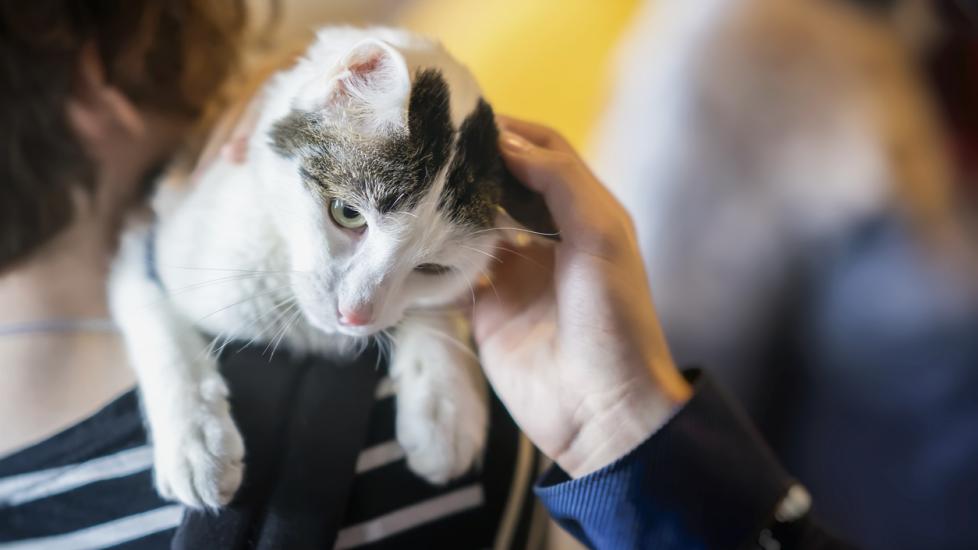
Creating a consistent communication routine is crucial when living with a deaf cat. Deaf cats rely heavily on visual and tactile cues to understand and interact with their environment. By establishing a consistent routine, you can ensure clear and effective communication with your feline companion.
Start by using visual cues consistently throughout the day. For example, always use the same hand signals for basic commands such as "come" or "sit." This repetition helps your deaf cat recognize and understand the intended message.
Additionally, maintain consistency in daily routines such as feeding, playtime, and bedtime. Deaf cats thrive in predictable environments, and a consistent routine provides them with a sense of security and stability.
Remember to be patient and understanding while establishing the communication routine. It may take time for your cat to familiarize themselves with the cues and routines. However, with consistency and positive reinforcement, you can strengthen your bond with your deaf cat and facilitate clear communication.
Capturing Attention and Getting Responses

When living with a deaf cat, capturing their attention and getting responses requires a slightly different approach. Since they can't hear verbal cues, it's important to find alternative ways to communicate.
One effective method is through visual stimuli. Using a flash of light or waving a brightly colored toy can catch their attention. You can also use hand signals, such as waving your hand or tapping on the floor, to prompt a response.
Positive reinforcement is key in encouraging responses from a deaf cat. When they respond to your cues or commands, reward them with treats, praise, or affection. This will reinforce the desired behavior and motivate them to continue responding to your visual cues.
Remember to be patient and consistent in your communication efforts. Over time, your deaf cat will become familiar with the visual cues and gestures you use, making it easier for you both to understand and communicate effectively.
I. Techniques for catching a deaf cat's attention

Catching the attention of a deaf cat may require some creativity and patience. Since they cannot hear vocal cues, visual stimuli become key in getting their attention. One effective technique is to use flashlights or laser pointers to create bright beams of light that they can perceive. These moving lights can pique their curiosity and encourage them to follow the path of the light. Additionally, utilizing vibrations can be helpful as well. Gently tapping on a surface near them or creating vibrations on the ground can alert them to your presence and signal that you are trying to communicate. Implementing these techniques consistently can assist in establishing a clear line of communication with your deaf cat and help strengthen your bond.
II. Encouraging responses through positive reinforcement

Positive reinforcement is a vital tool when it comes to encouraging responses from a deaf cat. By using rewards and praise, you can help your feline companion understand which behaviors are desired and reinforce their understanding of those cues. When your deaf cat responds correctly to a visual or tactile cue, immediately reward them with a treat, affectionate touch, or even playtime with their favorite toy.
Consistency is key in this process. Ensure that everyone in the household is on board with the same positive reinforcement techniques and that the rewards are consistently given for the desired responses. Over time, the deaf cat will associate these positive experiences with the behavior you want them to exhibit.
Remember to be patient while using positive reinforcement. Deaf cats may require additional time to understand and respond to cues, so it's important to be consistent and provide plenty of encouragement. A positive atmosphere will go a long way in fostering clear communication with your deaf cat.
Creating a Safe Outdoor Environment

Deaf cats, though they face challenges when it comes to hearing danger, still enjoy exploring the great outdoors. However, it is crucial for their safety that they have a secure outdoor environment. To minimize potential risks, certain precautions must be taken. Firstly, it is recommended to keep them on a leash or in a fenced-in area to prevent them from wandering off or encountering dangerous situations. Additionally, providing a safe outdoor space that is free from hazards such as poisonous plants or open bodies of water is essential. A well-maintained garden or an enclosed patio can serve as ideal outdoor spaces for a deaf cat to explore and enjoy the fresh air while staying protected from potential harm. By establishing a safe outdoor environment, deaf cats can still experience the joys of nature without compromising their safety.
I. Precautions for allowing a deaf cat outside

When it comes to allowing a deaf cat outside, there are a few extra precautions that need to be taken. Since your cat cannot hear potential dangers approaching, it is important to ensure their safety. Firstly, it is recommended to keep your deaf cat on a leash or in an enclosed outdoor space to prevent them from wandering off or getting lost. Additionally, make sure to supervise their outdoor adventures and avoid letting them out at night when visibility might be poor. It is also crucial to keep your cat up-to-date with vaccinations and provide them with identification in case they ever do manage to escape. By taking these precautions, you can help ensure that your deaf cat can safely enjoy the outdoors while minimizing potential risks.
II. Providing a secure outdoor space for exploration

Providing a secure outdoor space for exploration is essential for the well-being of a deaf cat. While it's important to be cautious when allowing a deaf cat outside, they can still enjoy the benefits of fresh air and sensory stimulation with proper precautions.
One option is to create an enclosed outdoor area specifically designed for your deaf cat. This can be done by setting up a secure fence around a designated portion of your yard or creating a catio, which is an enclosed patio-like space for cats. Ensure that the enclosure is escape-proof and free from potential hazards, such as toxic plants or open gaps.
Additionally, consider adding visual stimuli to enhance your cat's outdoor experience. Place bird feeders or toys near the enclosure, providing opportunities for your deaf cat to observe and interact with their surroundings.
By providing a safe and stimulating outdoor environment, you can allow your deaf cat to explore and enjoy the outdoors while ensuring their safety and well-being.
Conclusion
In conclusion, living with a deaf cat may present its challenges and require some adjustments, but it is a rewarding experience that can deepen the bond between feline and human. Understanding the causes and characteristics of deafness in cats is crucial in providing them with the necessary support and care. Creating a deaf-friendly environment through safety measures and designing an accessible living space ensures their wellbeing. Utilizing visual and tactile communication techniques, such as hand signals and gentle touch, enables clear communication with a deaf cat. Communication aids such as vibrating collars or specialized devices can also facilitate communication. Establishing a consistent routine and using positive reinforcement for responses further enhances the interaction. Lastly, providing a safe outdoor environment while taking necessary precautions allows a deaf cat to explore their surroundings safely. By embracing clear communication, one can celebrate the unique bond shared with their deaf feline companion.
I. Benefits of clear communication with a deaf cat
Living with a deaf cat can present unique challenges, but clear communication can bring a multitude of benefits to both the cat and its owner. First and foremost, clear communication ensures the safety and well-being of the cat. By successfully conveying commands and cues through visual or tactile signals, owners can prevent their deaf cats from getting into dangerous situations.
Additionally, clear communication allows for a deeper bond between the owner and their deaf feline companion. When both parties understand each other's needs and intentions, trust is fostered, leading to a stronger connection. This bond enables the cat to feel secure and loved, reducing stress and anxiety.
Furthermore, clear communication opens up opportunities for training and enrichment. With consistent cues, owners can teach their deaf cats new tricks and behaviors, boosting their mental stimulation and overall happiness.
By prioritizing clear communication with a deaf cat, owners create a harmonious living environment that enhances not only the cat's quality of life but also the relationship between human and pet.
II. Celebrating the unique bond with a deaf feline companion

Living with a deaf cat can be a unique and rewarding experience. Despite their hearing impairment, deaf cats are still able to form strong bonds with their human companions. In fact, the communication challenges you face can actually strengthen your relationship and deepen your understanding of each other.
The bond with a deaf feline companion is special because it is built on trust, patience, and non-verbal communication. You learn to rely on visual cues, hand signals, and touch to communicate effectively. This creates a deeper level of connection and a greater sense of empathy between you and your cat.
By celebrating this unique bond, you not only appreciate the resilience and adaptability of your deaf cat but also recognize the efforts you have made to bridge the communication gap. Together, you have created a loving and supportive environment that allows your deaf feline companion to thrive.




0 Comments